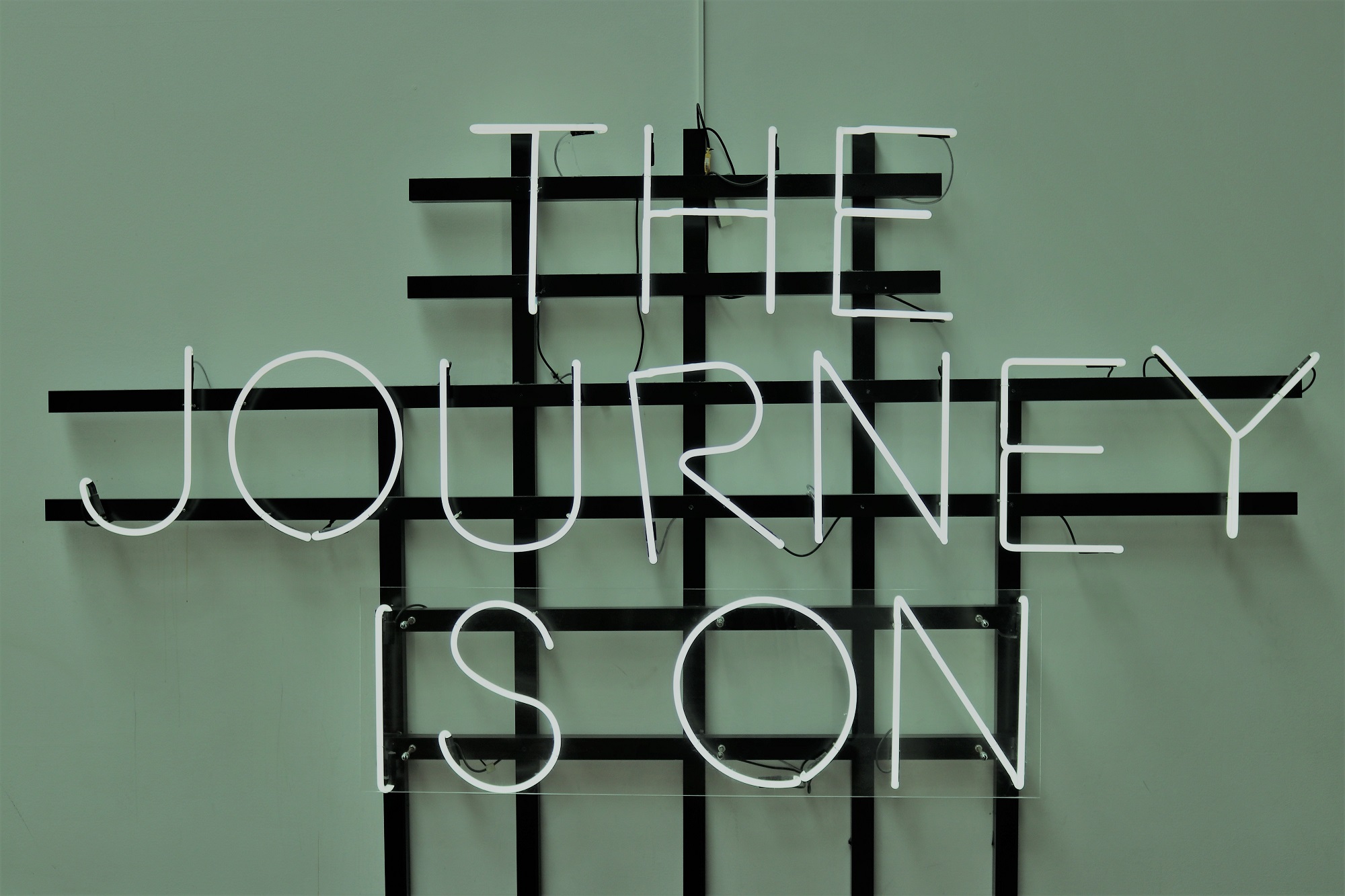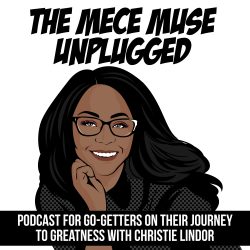Interview with Dr. Rachel Headley, a PHD scientist turned consultant! Dr. Headley is a Culture Change Strategist, Consultant, and TEDx Speaker. In this episode, Dr. Headley shares how she made the leap from scientist to consultant, provides insights into her recent TEDx talk, and shares how you could create high performing teams in any work environment.
Listen to the Episode Here:
Podcast: Play in new window | Download | Embed
Subscribe: Apple Podcasts | Email | TuneIn | RSS | More
Interview with Dr. Rachel Headley
We’re going to be talking about high-performing teams. A topic that for me is near and dear to a lot of the work that I do. I’m excited about our guest. Her name is Dr. Rachel Headley. She is a PhD scientist turned consultant. She’s the Founder of the Rose Group International, a boutique consulting firm focused specifically on organizational cultures. Dr. Headley is also a coach and a TEDx speaker. We’re going to talk a little bit about high performing teams, talk about her journey and how she made that transition from being in the science field and going into more of a consultancy space. We’ll also talk a little bit about her TEDx journey as well and some of the things that she shares. Rachel, thank you so much for joining us on the show. How are you doing?
Thanks for having me. I am great.
We’re going to have a great conversation about a topic that is near and dear to my heart. I know it is to other go-getters out there around high-performing teams. I want to take a step back and would love for you to introduce yourself to the go-getters of the show.
I go by Dr. Rachel Headley because I spent a lot of my life as a PhD scientist working with satellite data on the Landsat satellite mission for the first several years of my career. In the second several years of my career, I spent as the Operational Science Officer of that same mission. That’s what got me excited about high performing teams. It’s not some magic thing that you do. It’s a leadership choice. About a few years ago I started business consulting around high intellect, high tech, high science companies.
I continue to hear people that are scientists or in the science in that space that’s transitioning into consulting. That seems to be a trend I’ve seen over the years. How did you decide that was the pivot you wanted to do?
These days, especially for independent people, as young individuals we go into college thinking we have to decide on the thing and then we do the thing. Over our life, we wander around and find the next fun thing to do. I still love science. My TEDx was connected to science with the humanity part of the world. I love all of that. An interesting thing about science is what we do in science. At least in the science I do is we take different ideas and try to find the commonalities and the connections across different disciplines and try to bring together a whole story.
The reason I love business consulting so much is because that’s what we do as business consultants. As your go-getter audience knows is go into a client organization and we try to figure out what’s going on from everyone’s perspective and how can we put together a whole picture. The mechanics of it are similar. The older I got, the more I realize that it’s all about the humans. It’s all about the people and how we all interact as a team and interact together and how do we make our lives better every day. That’s how my life merged from hard science to leadership in a big science team into the business world where I now still help grow and create teams in a slightly different way.
It sounds like there are synergies within consulting and the science disciplines. What would you say is your definition of a great consultant?
A great consultant is someone who has the knowledge that it takes to provide value to their clients. That can be in lots of different ways. We work with risk people. We work with communications experts. You have to have the base knowledge and you have to be pretty good at figuring people out. You also have to be aware of what you’re not good at. Those are the three basic things about knowing when to say, “That’s a great question. I don’t understand or I don’t have that background. Let me bring in someone who does.” My company is anchored in providing the absolute highest possible value and as long as we’re doing that in a genuine way, that’s what makes great consulting.
You mentioned about your TEDx. Can you share a little bit about your adventure? I would love to hear about your story. How did you decide to talk about the Earthly planetary impact in Chernobyl and that story? I would love to hear the background of it.
My real intention of my TEDx is to showcase a life mantra I have, which is there are ways to have everyone work together. You have to find those ways, especially when business and high performing teams and teaming, there are few bad actors truly. It’s about communication, values and accountability. Once we get everybody on the same page, there are always ways to help people work well together. What I want to talk about my TEDx was that idea. How I did it was I used satellite imagery and talked about the human’s impact on the planet directly. Whether it’s cutting down forest or planting crops or Chernobyl, which was a technical disaster perpetrated by humans.
I wanted to use that as a beautiful backdrop because it’s sexy and fun, and who doesn’t want to look at beautiful pictures of the Earth? Relate the humanity and how humans impact the earth, but it’s not always bad. It’s not always irreversible. The answers of complicated problems are never at the extremes. It’s always somewhere in the middle. That’s the message I wanted to drive home. People that want to see it as an environmental talk can see it that way. Some people see it as a political talk and you can see it that way, but it’s about we need to work together to solve the most complicated problems and that’s why I love teamwork.
When you did your TEDx, were you still working as a scientist or had you transitioned into the consulting realm?

I’ve been working in consulting for a few years at that point.
You talked a little bit about Rose Group. For those go-getters that are interested, maybe you can share a little bit about what your company does specifically. What are some of the service offerings?
We have two partners that do the thought leadership for the company. It is me and my business partner, Meg Manke. What we do together is we’ve created some IP around how to create high performing teams, how to overcome barriers between leadership and staff. We look vertically through an organization. How we can improve communications in team, value, and accountability? The actual programs we offer are usually long. We have a range, but our most favorite thing to do is come into a company and fix them. One of the things we do as an example is we have a financial software company we work with. Our finance folks and the people that are doing the work are young engineers. They have different working styles.
The leadership likes to have a lot of understanding and control. The staff likes a lot of freedom and wants to move forward as fast as they can. After a couple of years or so, they have a hard time even talking to each other. They’re frustrated. We come in and we say, “We’re all in this together. We all want the same things. How do we move forward?” When we do those programs, that’s a year commitment usually at least because it takes a long time for people to take on new things and change a culture. Meg loves to prevent this kind of problem. She loves to train frontline supervisors. Meg has a group of consultants she works with. She’ll go into a company and train all frontline supervisors and their supervisors, and help them establish a leadership culture. We do both ways. I love to come into a gnarly problem and help fix it. She loves to prevent those problems from ever happening. We work on both ends of the leadership and culture spectrum.
It’s a nice segue to our topic around high performing teaming. I would love for you to talk a little bit more about your research and that you’ve done in this space. Maybe you can share a story with us. I’ll let you choose. A story of the best team you’ve ever been on and what made it great or the worst team you’ve been on it and what made it terrible?
We’ve thought a lot about this topic because that’s what drove us to do the research we did and create the solutions we have. For me, my Landsat team and I say my broadly. I still feel a lot of ownership because it was such a powerful experience. There was a four-person management team and we have about 150 engineers that we led. That team was incredible. An interesting thing about this incredible team is they were incredibly smart, experts in their fields but they knew that they needed the other people in the room to do the entire project.
One of the powerful things I loved about working for engineers. I worked for them in the servant leadership mentality. I loved how they were great at their job, but they also knew that they weren’t everything. We have to get all the horses pulling in the same direction vibe. No matter what challenge I laid before them and the management team lay before them, I was part of the team that migrated from a cost model. We would charge thousands of dollars per image and make about $5 million a year and sell about 25,000 images. That was for cost model.
We transferred over to a free model. Now you can get Landsat data for free all over the world. That transition was massive and overwhelming. Some people thought it’d be a death spiral for the mission. We lost our leader because she didn’t want to be the one that was in charge when all this happened and it was a stressful time, but we challenged our team and they stepped up. They released it ahead of schedule with no bugs. When we were charging, it was 25,000 images a year. We ended up distributing 25,000 images a day for the free model. They’ve distributed something like eight million images all over the world. We have 40,000-plus users in the community. It was an inspiring team environment. I learned much from working with them and helping guide the team.
The interesting thing about that is that at the very same time, the building, the organization that we were in was falling down around us. The top brass at the organization was asked to resign because of a little scandal, which was nothing. It was created to get rid of them. The culture of the entire building was becoming more and more insular, more and more sad. Everyone hated to go to work. Meanwhile, here was my team in the middle of it being incredible. It was a great dichotomy to watch what not to do and what you still could do as a leader and what the differences were. That’s what got me excited about teamwork.
Maybe you can share a little bit about the research you did and looking at the different personality types on teams and share some insights. Especially go-getters, as consultants, 99.9% of our experiences are on project teams. It’s always nice to be on a team where you’re energized, but when it’s bad it’s bad. Maybe you can share a little bit of the insights that you’ve picked up through the efforts you’ve done.
What we started looking into was what drives team? We were curious about the change because whenever we go-getters go into an organization, you are trying to instill some change on the landscape and it has to happen. Change has to happen and it has to happen in a team environment. We are interested in the crossroads of that experience. How do we create the highest value and get people through that change as quickly as possible to the good with the least pain? If you do change right in a team, you can create a high performing team through change. That was what we were trying to get to the root up. We’ve created four different culture types in a team environment.
Since I know you guys love how this all gets put together, I’ll talk about the intellectual side of it. There are two axes that we want to think about. One is some people love to work in a team, embedded in a team. Some people love to work alone or by themselves and they prefer to work on independent projects. The other axes that we looked at were a lot of people love order in their life and they like predictability. They like to know that they’re going to have a paycheck every week. It’s going to be this. This is how they can be promoted. This is how they can excel. Some people prefer that order. Some people love much more freedom, the freedom to decide what to do every day.
Freedom to decide how to make the team better, the freedom to decide how to problem solve. Those are the two axes that we felt if we could get a handle on how you fit into those two things, those two angles, we could help strategize about how to make things happen for you. Christie, I would imagine that you are what we call a fixer. A fixer loves problem-solving for the betterment of the environment or the team. You love working with a team, but you love to come in and solve problems for people. If you are on my team and we had a big change coming, I would reach out to you and say, “Christie, we have this big challenge coming up. How do you think we should tackle this? What do you think will resonate with the staff? What do you think we can do that will make it exciting and interesting instead of scary?”

I know you’re a fixer. I would give you challenges that would energize and excite you. You can’t always do something that’s fantastic every day, but I know what gets you going and what excites you. If you’re an organizer who loves to create order out of chaos, and you can work on your own pretty well but you love order. I would say, “We have all of this data. We have all of this information. Check this out and read through it and let me know what the data tell us about this change that we’re coming up with.” That’s going to be the thing that you’re going to love. What we figured out is if we can get you in one of these categories. We can strategize about how to motivate you, excite you, what you’re afraid of, how to allay those fears. That supercharges the team and the environment.
Do you have any advice for people that are joining a team? Like a newbie consultant reading this and saying, “That makes sense.” How would you give them the advice to break this down into an actionable first step if they joined a new team? They’re on a team that’s a runaway train. They’re on a team that’s in bad shape. How would you use some of this?
How we use it and how it’s exciting for everyone else to use is it is powerful because you can immediately figure out. If you’re on a dysfunctional team, we can immediately figure out almost every time what the root of the communication challenge is. That’s what it boils down to for most of the time or values alignment issue. What we do is we go in and we give them a little quiz. For our clients, we give them a bigger quiz. It’s based on all of those personality profiles that we know. Myers-Briggs, DISC, communication styles, all of the things. I can guarantee that anything that you’ve heard of about personality profiles, we’ve looked at. What we’ve done is we’ve embedded those into our culture types.
It works phenomenally well. What we do is we give them some questions. We can put you in a quadrant. It’s a great way to have a brand-new conversation about looking at what the challenges might be in a totally new way. Everyone loves it, first of all. I don’t know what it is about personality profiling and stuff, but people dig it. It gets them to say, “You are this person and that means this thing.” The reason that we like our approach better than the straight personality profile is that we embed the ways that you work in a team. If I know I’m an ENTJ in a Myers-Briggs, I cannot possibly figure out how I interact with the fifteen other personalities on my team. It’s too overwhelming.
We shortcut all that to say, “We’ve taken all the information, turned it 90 degrees and this is how you work in a team environment.” That immediately resonates with everybody and they can start fixing and addressing communication challenges and that’s how we use it. We go in and say, “You’re an organizer. You need to know this. Who in this room knows the data behind that question?” It’s a way to be upfront about how people work and in a way that every one of our categories is positive. There are no, “Losers.” Everyone is who they are and we value them as who they are. That’s an important premise.
From my experience working with different personality instruments and working with different teams. Have you found with your assessment that people in certain cultures tend to value a particular archetype profile more than another? Have you found that with yours? I’ve found that in some groups they think like, “If I’m analytical, I know that my firm or the people I work with value that.” I would want to be that. I wouldn’t want to be the happy-go-lucky person on the profile. Do you find that with yours?
We’ve been using it now for about a couple of years. We over time have relabeled one of the categories because we found that men and some women didn’t feel it was a good thing. It’s what we call a connector, which is the glue that holds a team together. They’re the ones that get things done. They’re the ones that are dependable. They deal with all the craziness that some other people have. They’re the anti-drama people. They don’t want any drama. They want to come to work and get their job done and be great at their job. If you’re a leader and then you are a connector, it means that you tried to protect your team from all the chaos that might be going up above you, which is one of the most valuable things that you could do.
A lot of people felt the connector was too soft or weak. We changed the label to stabilizer because that’s what they do and that feels a little stronger for people. For some reason, that language we needed to change. We don’t want people to feel there are winners and losers in the room because every single person contributes in an important way to the team environment. We wanted to make sure that there wasn’t someone in the corner like in DISC. We were talking about DISC with a client. In DISC, there’s one kind that they sit around the corner and they feel they’re not worthy of respect. We do not want that. We want to see everyone is like, “That’s who you are. That is cool.” That’s why we were careful with it.
Let’s go back to that runaway train. If you got one of those, which people do and they’re horrible. What’s the first step you would recommend that a go-getter take to start to try to turn the train around?
When you get to that runaway train, a lot of the times the runaway train has been gaining speed over time. This is not a short-term problem. What happens is feelings get hurt, emotions get embedded in the everyday day-to-day, and you have to get people to get up and out of that mindset. What we always do, which is incredibly powerful is that we interview people individually depending on the size of the team and all that. Sometimes we interview teams, but we interview people. What we do is we say, “Tell me about what your ideal day is. What do you want this company to look like?” We deal with a lot of startups. That’s in the startup world but, “What do you want from your experience at work? What is your ideal day?” We do that with everybody, every team. At the end of the day, we have an all-hands meeting and we bring everyone in the room. We say, “This is what we heard from you,” and we start writing a list on the board, “These are the things that we heard.” The great thing about that is every single person in the room thinks it’s their list because we heard the same thing from every single person. All of a sudden everyone looks around and says, “We all want the same thing here.”
We start talking about, “Why are we working so hard against what this looks like and what are the things that we need?” It’s a moderated conversation. We talk about the hard things. We speak truth to power and we don’t let sacred topics go unspoken. We don’t let old wounds go unhealed. We’re very masculine in our approach. Some people are great at that softer, “Let’s sit in a circle and cry, and get all this stuff out.” That is a powerful tool for some consultants. It is not our approach. It’s much more, “Let’s pull on our big pants here, talk about what is going on and let’s get these problems solved.” It’s much more direct.
My business partner would laugh at me because she has this HR background. She wants people to cry it out if they need to. I’m like, “If you’ve got to cry, go and talk to Meg.” We deal with business and business is always run by men. As sad as that is, we’re getting better at it. We’re increasing our female leadership. Even then a lot of female leaders tend to be much more masculine in their approach and that resonates with us. That’s how we tackle a lot of problems is, “This is a logic problem. There’s no emotion here. No one is bad. No one is naughty. It’s a communication problem or it’s an accountability issue. Let’s talk it out.” That’s how we address it.
As you were describing the process of how everyone got together. It turns out everyone had shared common goals at the end of a session. It fascinates me in terms of humans and how the stories we make up in our minds or in the day-to-day interpretation of actions gets muddled up. How did we get here? I don’t know if you do and if you’ve ever had those a-ha moments where you’re like, “How did they get to this point? Where are they going to be in a year from now?”

That’s an important arch to consider. A lot of times we try to make a clean break. Intellectually, we go back to the hotel and we’re like, “What is going on? How did this ever happen?” In front of the staff, it’s all about, “I don’t care what went on before. That ends now.” There’s no finger pointing. There’s no, ‘It was his fault, it was her fault. It was that team didn’t do their thing.’ What do we do now to achieve the things that you’ve all said you want to achieve?” For us, it’s a choice. We talk all the time about living in choice. If you don’t get a workout in, it’s because you chose to use your time in a different way. It’s not because you were too busy or you’re somehow a victim of your circumstance. It’s that you chose to use sometimes. Mostly it’s we choose to use our time differently. Same with work. If you’re unhappy at work and you’re the leader of that team and your team is unhappy, that is the leadership choice. It is within your power to change that. We talk a lot about, “You have to own your circumstance and what’s going on here. You need to make the choices to change it.” Everyone in the room needs to commit to doing that.
I’m going to pivot for one of the last questions of the interview. I heard a rumor that you were potentially writing a book. Tell us about it.
We are. One of the things we love about our approach and we’ve used it a lot now is we’ve figured out that we don’t want to grow our company to be a huge stable of consultants that have to answer to us. Most go-getters want to work for themselves. We want to support those women and men. What we want to do is start sharing the way that we think about leadership and teams, especially our IP around how you do culture work. The book is the first start. The working title is called Juice because we are all about energizing and making you want to go to work. That’s our goal is making every single person excited to go into work in the morning, which is lofty but we know we can do it.
We can’t do those ourselves. What we want to do is start putting these techniques and the power of what we do in the hands of other like-minded go-getters, independent consultants that want to change the world and lead powerfully through their consulting business. We’re getting the book together. It’s about the culture types we’ve developed and how you think about embedding that in the traditional accountability team focus, empathy, like those core leadership values that we all train on and coach on. Changing culture is an advanced skill for consultants. We weave it into the basics and tell you how you would use it in a culture, in a client or in your own company. How to lead through change, which is the top-notch leadership challenge that we all face. When that book comes out, what we are going to start doing is certifying consultants in our approach so that when they go on the landscape, they know what they have. They understand what it is. They understand how to implement it. They can use it to the highest value for their clients. That will be the model that we move forward down 2018 with.
I would love to stay connected with you and have you come back on the show when you publish the book.
That would be great because it’s all exciting time. Seeing it and having it in hand is going to be exciting.
This was a fantastic conversation. If people are interested in getting a hold of you or doing work with the Rose Group, maybe you can share some ways people can reach out to you.
I’m active on LinkedIn. If you search on Dr. Rachel MK Headley, you’re going to find me. Our website is RoseGroupIntl.com. If you want to find out what culture type you are, we have a quiz and it’s a link right on the top frame of our website. You could go find your culture type if want to go check it out. A lot of our material is on there. We don’t have a lot of the details because it’s being trademarked. We are little careful about how much we reveal the details. You can certainly find out a little bit about some of our work there.
Thank you so much for being on the show. It was such a blast.
Thank you so much, Christie. I love talking to like-minded people. It’s a joy.
Links from today’s episode
About Dr. Rachel Headley
 Developing big, complicated culture and process opportunities is my passion – from across the org chart to internal teams to executive one-on-one coaching. I apply my experience and lessons from a decade of satellite science research and a decade of satellite operational management.
Developing big, complicated culture and process opportunities is my passion – from across the org chart to internal teams to executive one-on-one coaching. I apply my experience and lessons from a decade of satellite science research and a decade of satellite operational management.
I am a professional keynote speaker, with a TEDx and TED-esque talk in front of a 10,000-plus live audience.
I am an author, having written on topics ranging from technical complexities of satellite systems to satellite data used in conservation, to change strategy.
I am a global citizen, and I have been known to blog about the more ridiculous travel situations in which I occasionally find myself.


